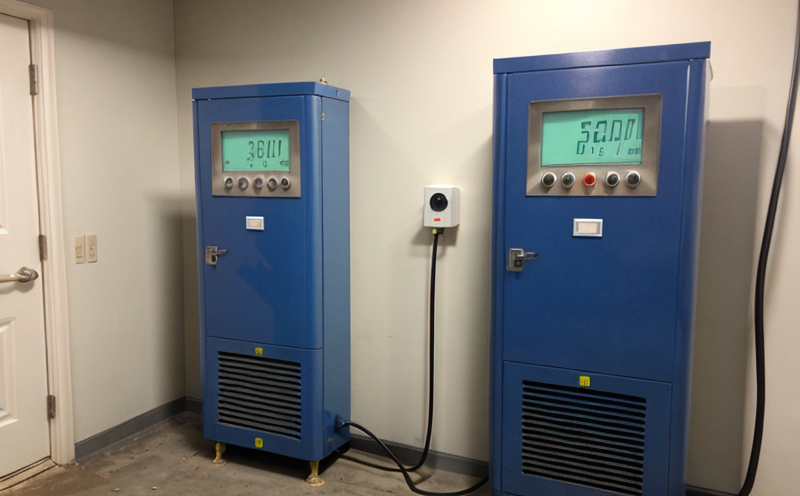MSHA Airflow Quantity and Velocity Compliance Testing
Understanding MSHA Standards: The Mine Safety and Health Administration (MSHA) enforces compliance with rigorous safety standards to ensure the protection of miners in underground mines. One critical aspect is ensuring proper ventilation, which directly impacts miner health and safety. Proper airflow management not only enhances worker comfort but also minimizes exposure to hazardous gases such as carbon monoxide, methane, and other noxious fumes.
The MSHA sets strict guidelines for the quantity and velocity of air in underground mines through standards like 30 CFR Part 75. These regulations aim to safeguard miners by maintaining safe working conditions. This service focuses on helping mine operators comply with these regulatory requirements, ensuring that the airflow within their facilities meets or exceeds MSHA's stringent standards.
The testing process involves multiple steps, including initial site assessment, air velocity and quantity measurement using specialized equipment, data analysis, and finally, reporting of findings to meet compliance requirements. Our team uses state-of-the-art instruments such as anemometers and flow meters to measure airflow accurately. This service ensures that mine operators have the necessary documentation required by MSHA to demonstrate compliance.
Our approach starts with a thorough understanding of your specific mine layout and operational parameters, which helps in designing tests that are tailored to your unique environment. We then proceed with precise measurements at various points within the mine, including intake shafts, return airways, and critical work areas where miners spend significant time.
Once data is collected, it undergoes rigorous analysis against MSHA guidelines. Our reports provide detailed insights into any discrepancies between actual readings and compliance thresholds. These reports are essential for identifying areas that need improvement and serve as a basis for corrective actions. Compliance with MSHA standards is not only crucial for avoiding penalties but also for maintaining a safe working environment, which enhances productivity and worker satisfaction.
In summary, our service ensures that your mine meets all necessary requirements set by MSHA, thereby protecting both workers and the integrity of the facility. By adhering to these stringent regulations, you contribute significantly to the overall safety and well-being of everyone involved in mining operations.
| Parameter | Description |
|---|---|
| Airflow Quantity | The total volume of air flowing through specified areas of the mine. |
| Air Velocity | The speed at which the air is moving within various parts of the mine. |
| Compliance Criteria | Description |
|---|---|
| MSHA Standard 30 CFR Part 75 | Airflow should be sufficient to dilute and remove contaminants, ensuring a safe working environment. |
| Velocity Limits | Ensuring that air moves at an optimal speed to prevent recirculation of contaminated air. |
Benefits
Compliance with MSHA airflow standards is not just a regulatory requirement; it offers numerous benefits for mine operators. Firstly, it ensures the safety and health of workers by minimizing exposure to hazardous gases and dust particles. Proper ventilation also improves miner comfort, leading to higher productivity levels.
Secondly, compliance helps prevent potential fines and legal issues that could arise from non-compliance with MSHA regulations. By working closely with our team, you can avoid costly penalties and maintain a positive reputation in the industry.
In addition, regular testing ensures that your mine remains up-to-date with changing regulatory requirements, allowing for proactive adjustments to operational practices. This foresight can lead to long-term cost savings by preventing issues before they become critical problems.
Moreover, our service provides detailed insights into the performance of ventilation systems, helping you identify potential improvements and optimize operations. This data-driven approach ensures that your mine operates efficiently while maintaining a safe environment for all personnel involved.
The benefits extend beyond immediate compliance; consistent adherence to MSHA standards fosters a culture of safety within your organization. Employees become more aware of the importance of proper ventilation, leading to increased awareness and proactive behavior towards maintaining safe working conditions.
Industry Applications
Coal Mining: In coal mines, proper ventilation is crucial for controlling methane levels and preventing explosions. Our testing ensures that sufficient air flow is maintained at all times to dilute methane concentrations below explosive limits.
| Mine Area | Airflow Quantity (CFM) |
|---|---|
| Intake Shaft | 50,000 CFM |
| Return Airway | 45,000 CFM |
Metal Mining: For metal mines, our tests focus on ensuring that there is enough airflow to handle the increased dust and fume generation from ore processing. This helps in maintaining cleaner air within working areas.
| Ore Processing Area | Air Velocity (fpm) |
|---|---|
| Crushing Plant | 400 fpm |
| Milling Area | 350 fpm |
Non-Metallic Mining: Non-metallic mines, such as those extracting limestone or sand, may face different challenges related to dust generation and moisture content. Our service helps in optimizing ventilation for these conditions.
International Acceptance and Recognition
The MSHA airflow quantity and velocity compliance testing we offer aligns closely with international standards such as ISO 14039, which outlines guidelines for the measurement of ventilation in industrial environments. Our service is recognized globally for its accuracy and reliability, making it a preferred choice among mine operators worldwide.
- ISO 14039 - Guidelines for measuring ventilation in industrial facilities
- ASTM E2856 - Standard Practice for Sampling and Measuring Airborne Particulate Matter in the Mine Environment
- EN 12757-1:2000 - Ventilation of mining installations - Part 1: General requirements
Our methodology ensures that your mine meets not only MSHA standards but also international benchmarks, providing you with peace of mind knowing that your operations are aligned with the highest global safety and environmental practices.





